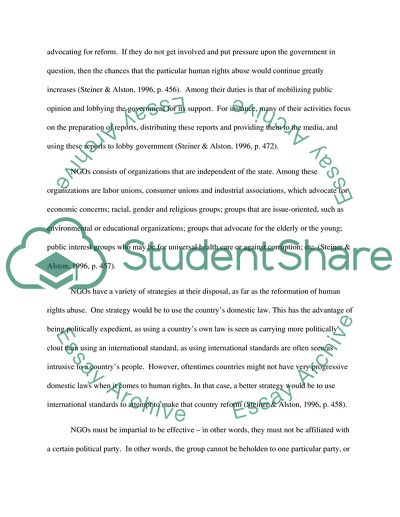Cite this document
(Convention against Torture and Other Cruel Essay - 1, n.d.)
Convention against Torture and Other Cruel Essay - 1. Retrieved from https://studentshare.org/social-science/1747989-with-reference-to-the-issues-of-international-justicetorturelandmines-campaign-lesbiangay-rights-examine-how-the-un-charter-based-other-actors-contribute-to-progress-in-their-fields-and-how-the-setting-of-standards-has-worked-in-practice
Convention against Torture and Other Cruel Essay - 1. Retrieved from https://studentshare.org/social-science/1747989-with-reference-to-the-issues-of-international-justicetorturelandmines-campaign-lesbiangay-rights-examine-how-the-un-charter-based-other-actors-contribute-to-progress-in-their-fields-and-how-the-setting-of-standards-has-worked-in-practice
(Convention Against Torture and Other Cruel Essay - 1)
Convention Against Torture and Other Cruel Essay - 1. https://studentshare.org/social-science/1747989-with-reference-to-the-issues-of-international-justicetorturelandmines-campaign-lesbiangay-rights-examine-how-the-un-charter-based-other-actors-contribute-to-progress-in-their-fields-and-how-the-setting-of-standards-has-worked-in-practice.
Convention Against Torture and Other Cruel Essay - 1. https://studentshare.org/social-science/1747989-with-reference-to-the-issues-of-international-justicetorturelandmines-campaign-lesbiangay-rights-examine-how-the-un-charter-based-other-actors-contribute-to-progress-in-their-fields-and-how-the-setting-of-standards-has-worked-in-practice.
“Convention Against Torture and Other Cruel Essay - 1”, n.d. https://studentshare.org/social-science/1747989-with-reference-to-the-issues-of-international-justicetorturelandmines-campaign-lesbiangay-rights-examine-how-the-un-charter-based-other-actors-contribute-to-progress-in-their-fields-and-how-the-setting-of-standards-has-worked-in-practice.


